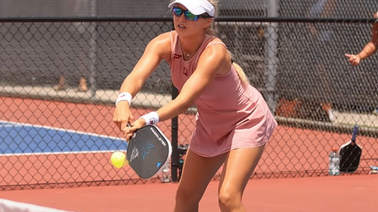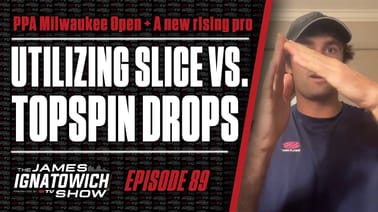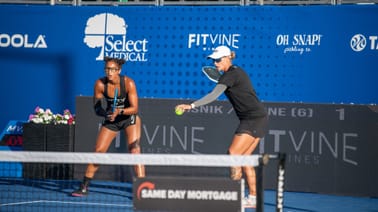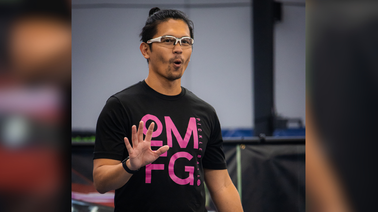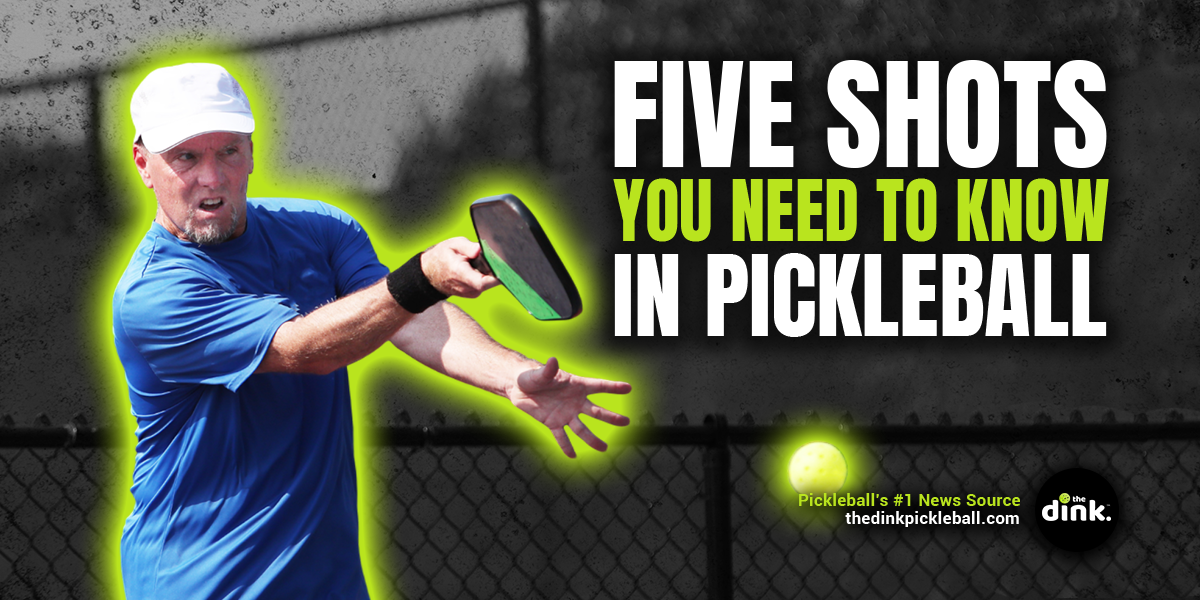
If you find yourself being thrown onto a pickleball court – either by a friend or because of all the hype surrounding our sport – then you will want to know a few things, especially the most critical shots of every point.
We'll introduce you to the first five shots in doubles pickleball and what you need to know about each as you begin your new addiction.
No. 1 - The serve
Like any other racquet or paddle sport, the game begins with a serve. The unique part of pickleball is the rules that apply to a serve, including:
- The server's arm must be moving in an upward arc when the ball is struck
- Paddle contact with the ball cannot be made above waist level
- The head of the paddle must not be above the highest part of the wrist at contact
- The serve is made diagonally crosscourt and must land within the confines of the opposite diagonal court
- Only one serve attempt is allowed per server
Of course, there are nuances to serve rules that you'll learn as you experience the game more, but those are the gist of how to serve in pickleball.
Tips for the serve
The number one tip for serving for beginners is to focus on getting the ball over the net and keeping it in bounds. To do this, aim for the middle of the box that your opponent is standing in and avoid aiming for the sidelines.
This gives you the biggest margin for error and will help you develop confidence, which will strengthen your serve over time.
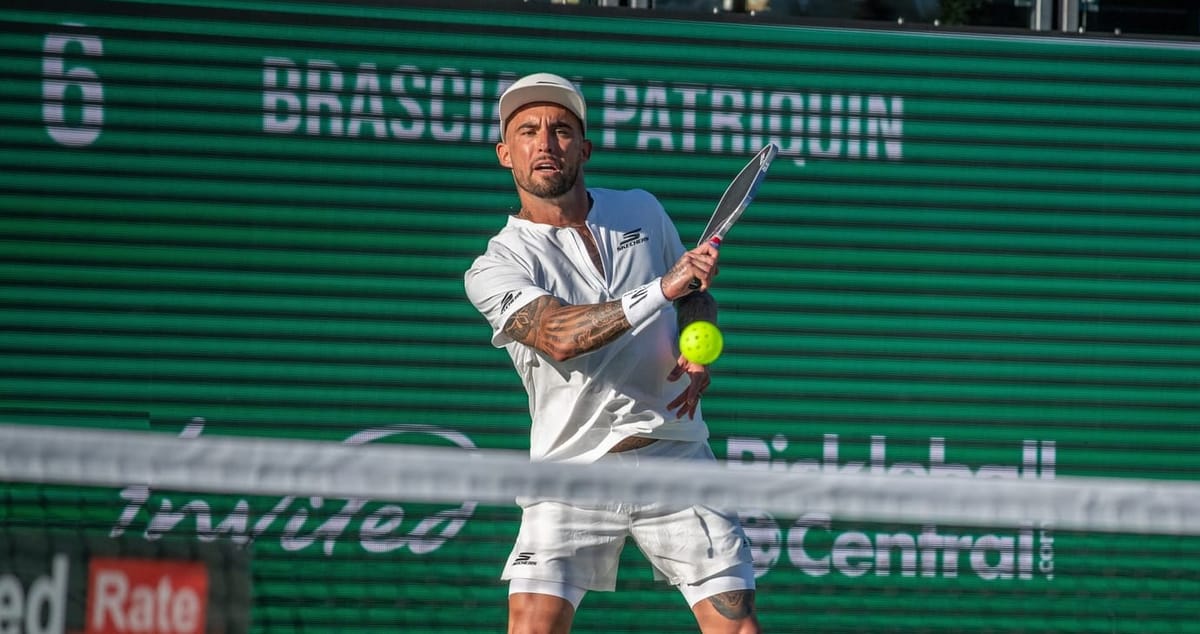
No. 2 - The return of serve
The return of serve is what it sounds like. It’s returning the ball off of the serve to the other team. There are no stringent rules for the return of serve other than letting the ball bounce before hitting it.
However, once it bounces, you can return the ball in any direction if it goes over the net and stays in bounds.
Tips for the return of serve
The biggest mistake beginners make is not standing far enough behind the baseline. Because the ball has to bounce, you must wait for the serve to get to you. If you're standing inside or just behind the baseline, you're not giving yourself much room to swing.
Try to stand at least three feet behind the baseline for your return of serve. As you gain more experience, you can move around more and find the most comfortable spot for yourself.

No. 3 - Third shot
The third shot is one of the most (or maybe the most) important shots in pickleball. It happens after the return of serve and is unique in pickleball because of the double-bounce rule.
The double bounce rule states that the ball must bounce once on each side of the court after a serve. This means that the team that served the ball must let your return of serve bounce before they can hit it.
In other racquet sports, you can immediately begin volleying (hitting the ball out of the air). In pickleball, the serving team must stay back as the return serve comes their way, putting them in a less-than-favorable position for the third shot.
Tips for the third shot
Often, after a beginner player serves, they will take a few steps toward the net and wait for the third shot. This is a mistake. Similar to the tip about staying behind the baseline, you want to stay as far back as possible while waiting for the other team to return the ball.
It’s always easier to move forward toward a ball than to try and hit a good shot while moving backward. So, after your return, step back behind the baseline to see where your opponents send the ball next.
No. 4 - Third-shot drop or drive
Now that you understand the importance of the third shot, you’ll want to learn how to use the third-shot drop or the third-shot drive.
A drop shot is a soft, high-arcing shot that lands in front of your opponent and gives your team time to make it up to the kitchen line (the optimal position for players to stand). It’s a shot unique to pickleball, and learning to drop the ball effectively is a huge part of player development.
A drive shot is a hard, flat shot like in other racquet sports. A good drive can cause problems for the other team and sometimes win the point immediately.
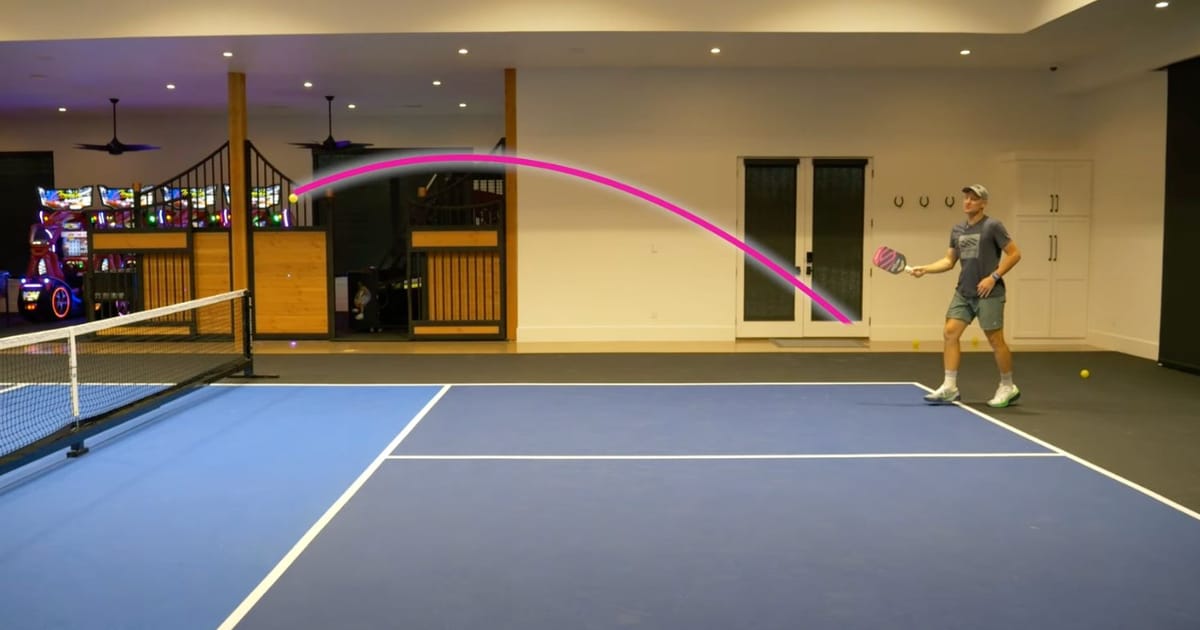
Tips for the drop or drive
When to employ a drop or a drive shot on the third shot is something you’ll learn as you progress in your pickleball playing. Most often you want to use the shot that either a) gives your team an advantage or b) your opponents are worse at defending.
To hit a good drop shot, the key is to place your paddle under the ball and slowly lift it back up (using your legs) as you make contact with the ball. An effective drop shot should land about three to four feet inside your opponent’s kitchen, just over the net.
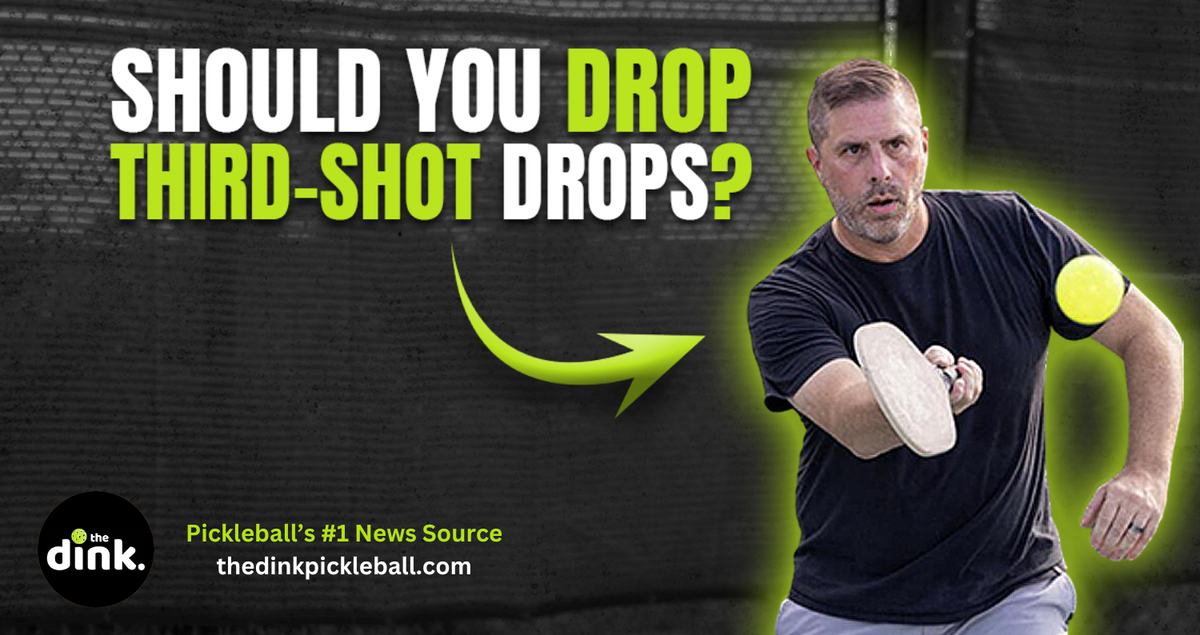
Like putting in golf, drop shots take a good touch and feel to do well.
You want to keep your body and paddle low and turn your hips to generate power to hit a good drive. Instead of trying to hit a drive as hard as possible, focus on hitting it at about 70 percent of your power. Because pickleball courts are short, hitting a ball out of bounds is very easy.
Aim about six inches over the net and at the player who is either on the run or less likely to handle a drive well.
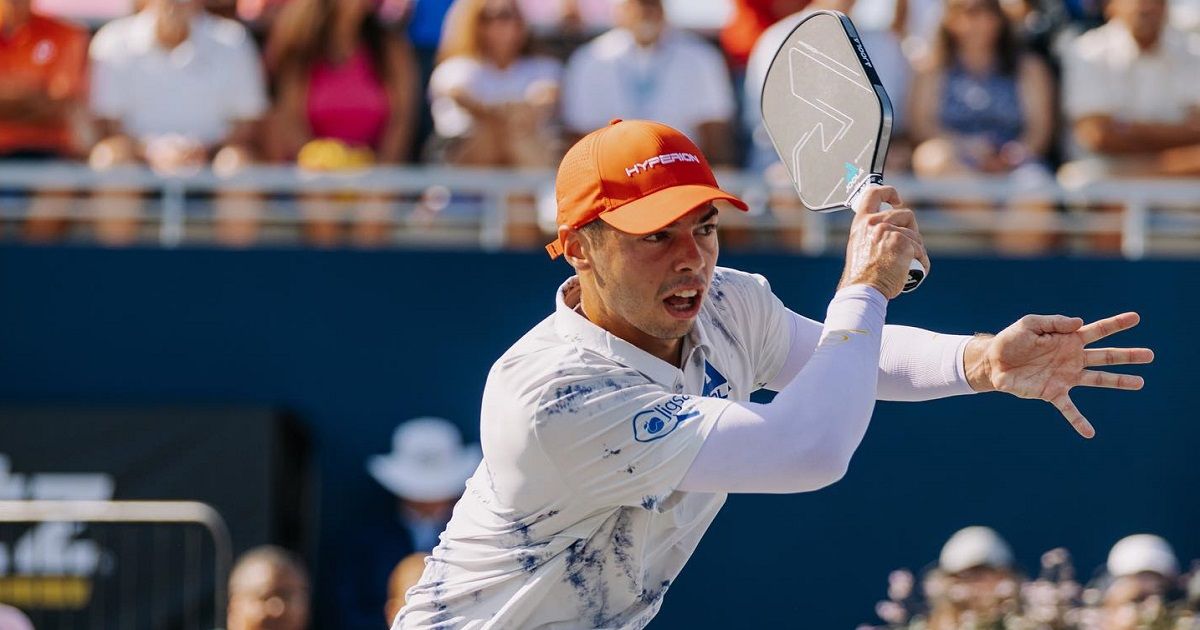
No. 5 - The fourth shot
The fourth shot is vital for the defensive side (the side that does not serve the ball) because it often determines whether the serving team will make it up to the kitchen line.
Most points are won or lost in doubles pickleball while players are at the kitchen. The team with more players standing at the kitchen line has an advantage.
Because of the double-bounce rule, the returning team starts with this advantage, and hitting a solid fourth shot will help you maintain that advantage throughout the point.
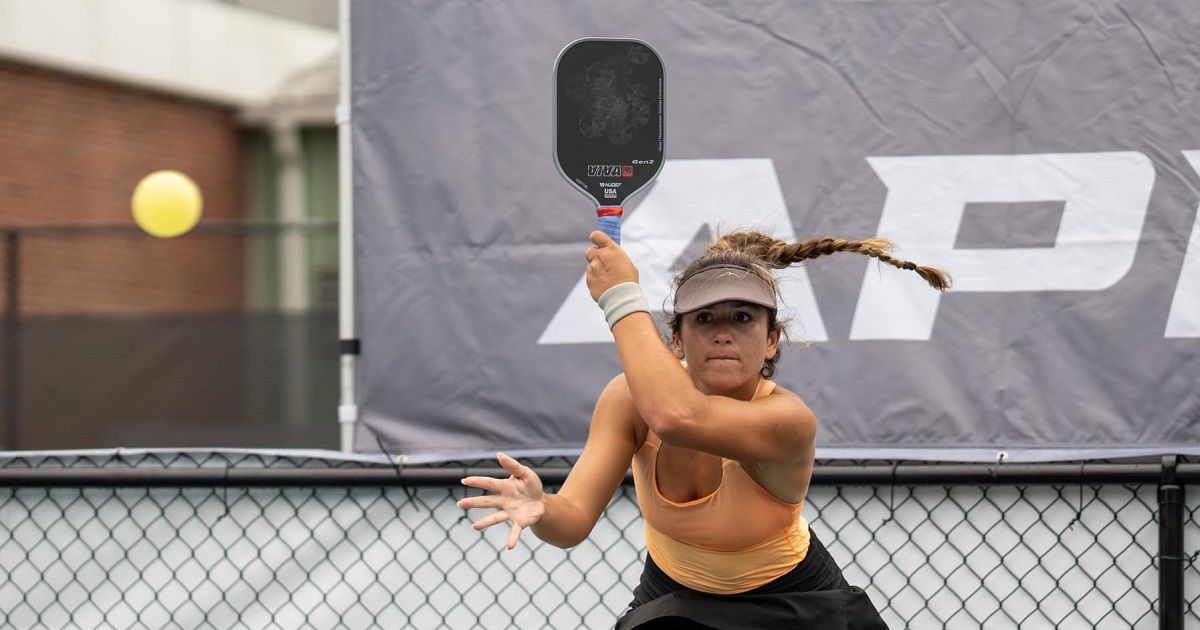
Tips for the fourth shot
Your goal for the fourth shot is to keep your opponents back toward the baseline as long as possible. To do this effectively, aim your shots at your opponent's feet. By aiming for their feet, you are a) hitting down on the ball and b) giving them a more challenging ball to hit back to you.
If you hit a shot above their knee or waist, they can return it much easier and give themselves more time to make it to the kitchen.
As for the rest of the shots you need to know in pickleball, continue playing and learning from the players around you.
(Also, subscribe to The Dink's best-in-class FREE newsletter for more tips and advice.)
You'll be a force to be reckoned with in no time.




